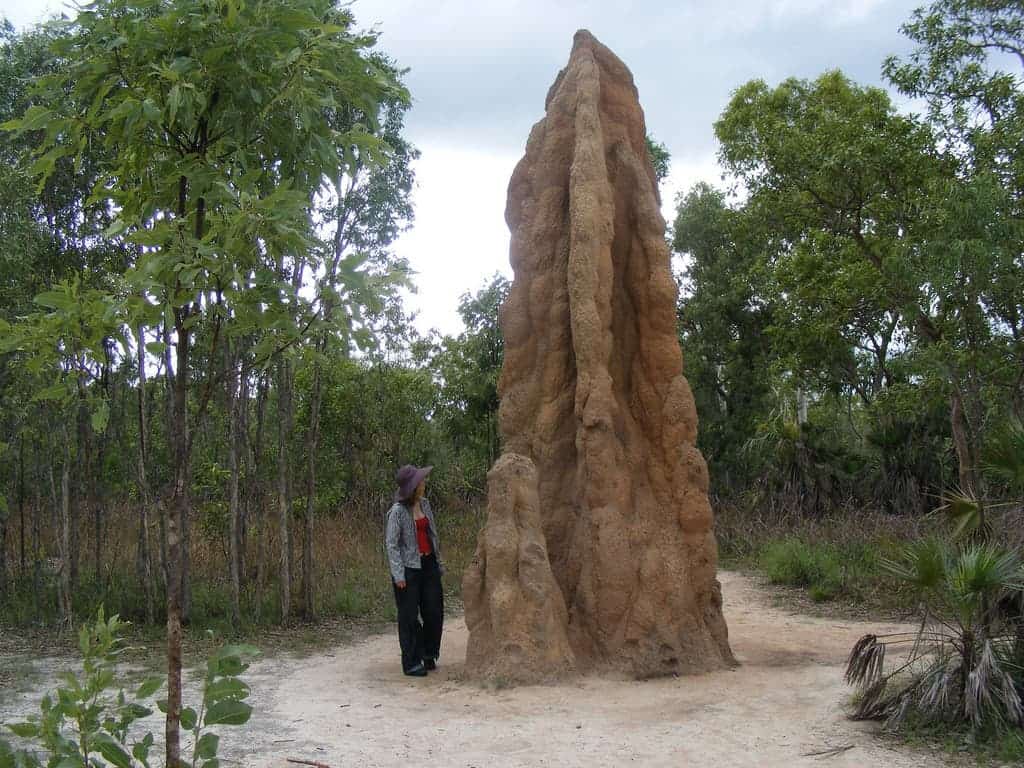Termites in northern Australia share an evolutionary story very similar to that of humans, first braving vast swathes of oceans and then migrating from tree-tops to the ground, a new paper from the University of Sydney reports.

Image credits librarianidol / Flickr.
Western Australia, Queensland and the country’s Northern Territory are specked here and there with an unassuming wonder of animal engineering — mounds of earth that can reach up to eight meters (26.2 feet) in height, each a self-sufficient colony housing millions of insects. They’re the work of Cathedral termites and, when you consider that each insect can reach about 3mm (0.1 inches) in height, the sheer scope on which they develop the mounds truly hits home. If termites were human-sized, their average mound would be four times as tall as our tallest building, the Burj Khalifa.
Pound for pound — or rather, inch for inch — cathedral termites kind of one upped us in the masonry department. So where did these contenders come from? Well, we didn’t really know up to now, says Associate Professor Nathan Lo from UoS and co-lead author of a paper examining the species’ origin.
But now we do
The team used DNA sequencing to determine that today’s termites are descendant from “nasute termites” which arrived in Australia some 20 million years ago, either from Asia or South America. Lo believes that they’ve hitched a ride to the continent on pieces of driftwood or other floaty plant matter washed away by storms or tsunamis. They also found evidence that at least three separate colonization events took place in that time-frame.
“It’s a strange result but we’re very confident about it,” said Lo. “The closest relatives of these mound-building termites in Australia are actually tree-nesting termites that live in Asia and South America.”
True to their ancestry, the first insects lived in trees on coastal areas. Over time, as more arid conditions set in northern Australia and the trees largely died off, the insects began to build their colonies on the ground and feed on grass or other low-lying plant matter.
But shifting climate did more than re-settle the insects — it also forced them to build, or be wiped out. Over the next 10 million years, the drier conditions turned Australia’s thick forests into the dry plateaus we see today. Somewhere between 10 to 7 million years ago the termites started digging for moisture, and “that’s why they started to build mounds,” Lo explains.
“Once in Australia, they continued to build their nests in trees, but later descended and began building mounds on the ground instead, paralleling the evolution of the other great architects of the world – human beings, whose ancestors lived in the tree tops some millions of years ago.”
“These amazing mounds we see in the north of Australia, we didn’t know if they were 100m years old, 50m years old. Now we know it’s more likely that within the last 10m years that they’ve popped up. They weren’t here when Australia separated from Gondwana some 100m years ago – they evolved here relatively recently due to ancient climate change.”
The mounds also likely helped cool them off when they lost the cover of canopies, and might even have played a significant part in staving off full desertification of the continent.
Humans would also take a similar evolutionary route later on, by leaving Africa’s retreating forests and migrating all over the place. By the time they reached Australia (the oldest settlement we’ve found is 50,000 years old) the termites were already well dug-in inside their mounds.
The full paper “Parallel evolution of mound-building and grass-feeding in Australian nasute termites” has been published in the Royal Society journal Biology Letters.






